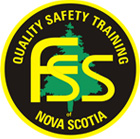Air Impact Wrench
Hazards Identified:
Eye, face, hand and foot injuries
Hazard-Specific Personal Protective Equipment:
Safety glasses with side shields, CSA Grade I foot protection
Hazard-Specific Training:
Training under the supervision of a competent person
Safe Work Practice:
Before operating your air tool, read the following instructions:
Always operate, inspect and maintain this took in accordance with the American National Standards Institute for Portable Air Tools (ANSI B 186.1) and any other applicable safety codes.
Never operate this tool over 90 psi (6.2-bar/620 kPa) air pressure at the tool.
Always wear safety glasses when operating this tool.
Always turn off the air supply before installing, removing, or adjusting any accessory on this tool, or before performing any maintenance on this tool. Failure to do so could result in injury.
Use only impact wrench sockets and accessories on this tool. Do not use hand sockets and accessories.
Don’t force tool beyond its rated capacity.
Do not carry the tool by the hose. Protect the hose from sharp objects and heat.
Keep body-working stance balanced and firms. Do not overreach when operating the tool.
Place the tool on the work before starting the tool. Do not point or indulge in any horseplay with this tool.
Keep the tool in efficient operating condition.
Regulations, Standards and References
Occupational Safety General Regulations
